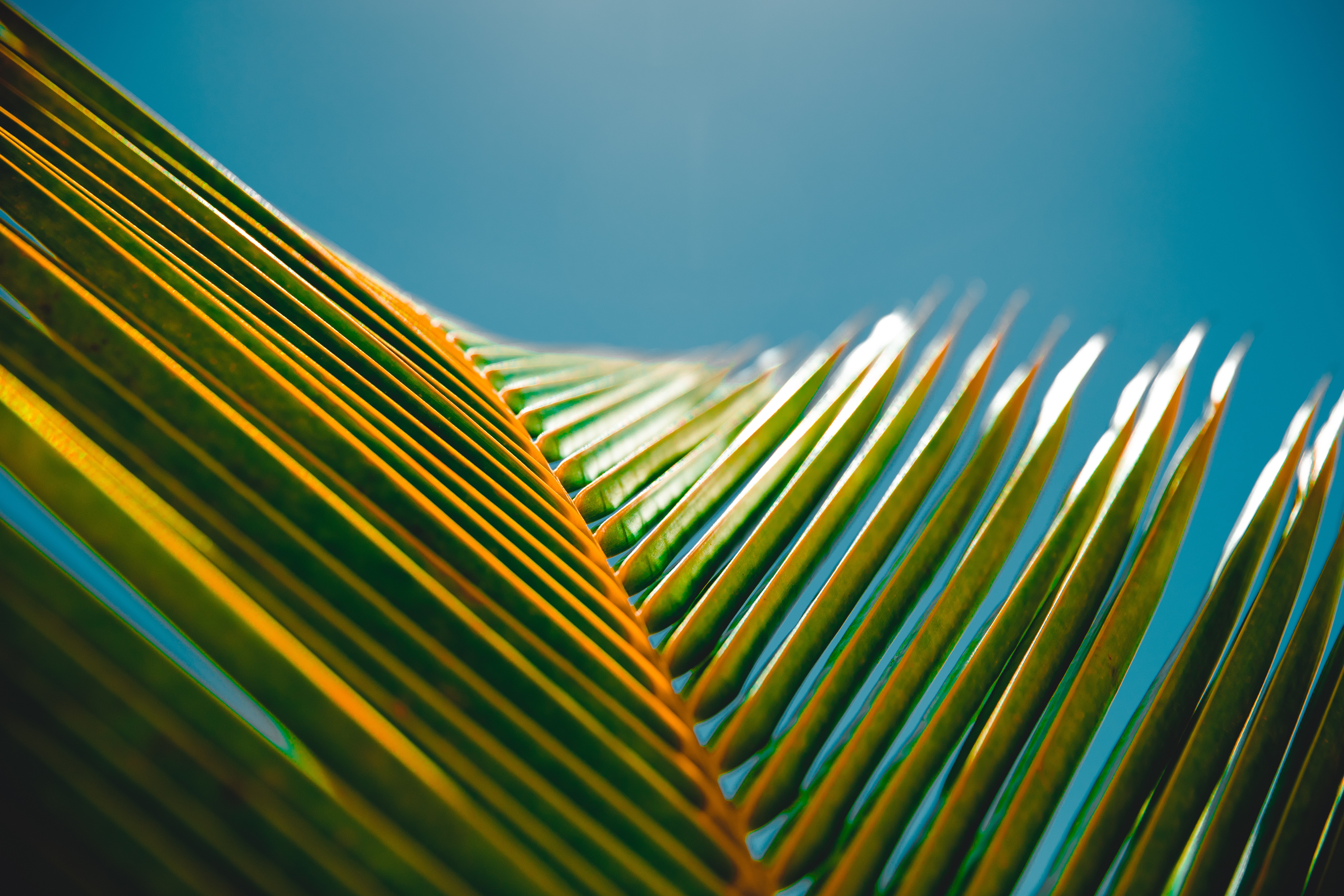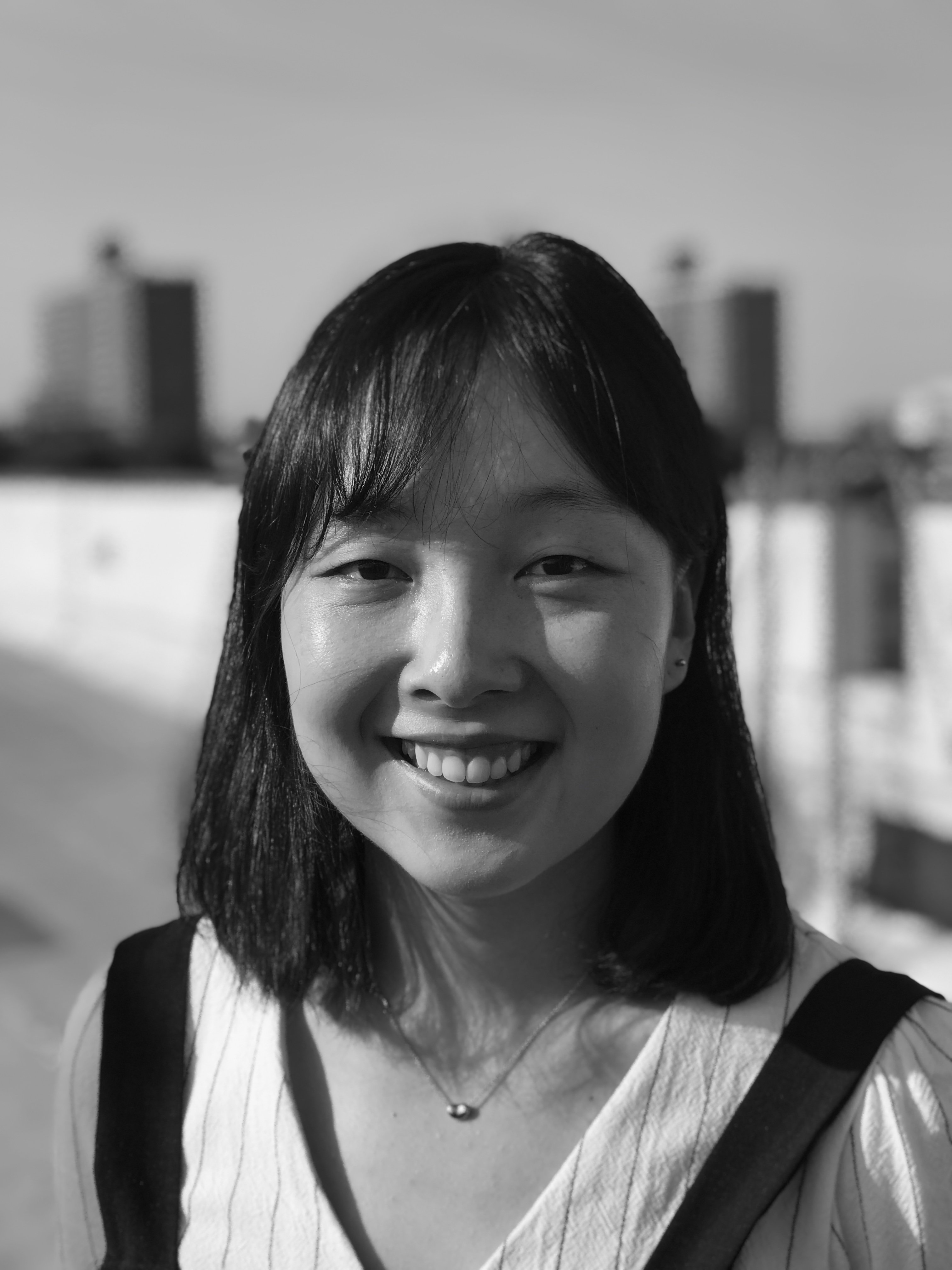Seeding Collaborations: A Conversation with farid rakun
For this Seeding Collaborations, we spoke with farid rakun—an artist, writer, editor, teacher and instigator based in Jakarta, Indonesia and a part of the artist collective ruangrupa. rakun is trained as an architect, but “wears different hats, dependent on who is asking.” We were drawn to his extensive practice in working collectively and his generosity in knowledge building and sharing. Our time with rakun was spent hopping from one idea to the next, including the plurality of collectivity throughout the world, making room for experimentation, and the importance of joy in art.
With ruangrupa, rakun has collaborated on numerous large-scale curatorial projects such as Sonsbeek 2016 in Arnhem, Netherlands and documenta fifteen. Through their presentation at documenta, an art exhibition that takes place every five years in Kassel, Germany, the term “lumbung” came to prominence. Lumbung is the Indonesian word for a communal rice barn. Through the lumbung, ruangrupa explored the influences of collective practice on artistic practice not only in concept but also in the practicalities through resource sharing and collective decision-making.
An important collaborative project of ruangrupa is GUDSKUL: Contemporary Art Collective and Ecosystem (Gudskul), a public learning space that was initiated with Serrum, an art collective by art students of the State University of Jakarta, and Grafis Huru Hara, a printmaking collective. Gudskul was conceived as a public learning space “to practice an expanded understanding of collective values, such as equality, sharing, solidarity, friendship, and togetherness.”
Through our conversation, rakun takes us through the tough questions that are asked when working through these various collaborative projects and shares his own tacit knowledge built from more than two decades of practice.
Sophia Park (SP): Can you give us a little view into ruangrupa, 23 years into working as a collective? What is ruangrupa thinking about now? What is your relationship to ruangrupa currently?
farid rakun (fr): ruangrupa is preparing for our 25 year anniversary. So many possibilities for the form it will take. The ten of us don't meet that often anymore to be honest, because many of us realized that we ask a lot of people during the lumbung process—not only of ourselves, but also of others. We are letting time answer when the right moment is to meet again properly.
In terms of myself, I have a one-and-a-half-year-old now. During the pregnancy and after she was born, I was busy with documenta fifteen. So now is the time for my partner to shine. A lot of the time, I followed my partner for her work. I'm becoming a stay-at-home dad and I feel lucky. In Indonesia, it's not that common, so the fact that we can do it is a privilege. The people I'm working with are giving me the space and time to make this decision and not imposing anything on me. This is a pretty rare moment, an expected moment. I minimize my working time, but I'm still working because of lumbung Indonesia.
ruangrupa is also busy with Gudskul. We started Gudskul at the end of 2018. Many questions that were left unanswered at that moment came back. We are busy rethinking what Gudskul can be in practice. Not only what we should do, but also how we can sustain our existence. That boring stuff like finance and strategy. We convened our Majelis, our Gudskul assembly, so many times by now—like 30 times in the last seven months. So it's a very intense time for Gudskul due to many challenges, finance being one of them. Another is trying to answer new questions after documenta fifteen, since things have shifted. Our reality is different. Our perspective has shifted. Our horizon has become different. What should we do with Gudksul to answer the sustainability question? Relatedly, we’re asking ourselves what type of projects we're interested in. What type of invitations are we going to say yes to? How are we going to connect with each other internally as well? How do we see each other? We try to be professional. We were an artists’ collective, much more friendship-based. With Gudskul, we tried for two years or so to become more professional by addressing everyone's time and recognizing working times for everyone. But this created certain other challenges, and professionalism itself didn't always come naturally either. So then the question becomes, “what learnings are we taking away from the failures and the practice?” All these questions are keeping us busy.
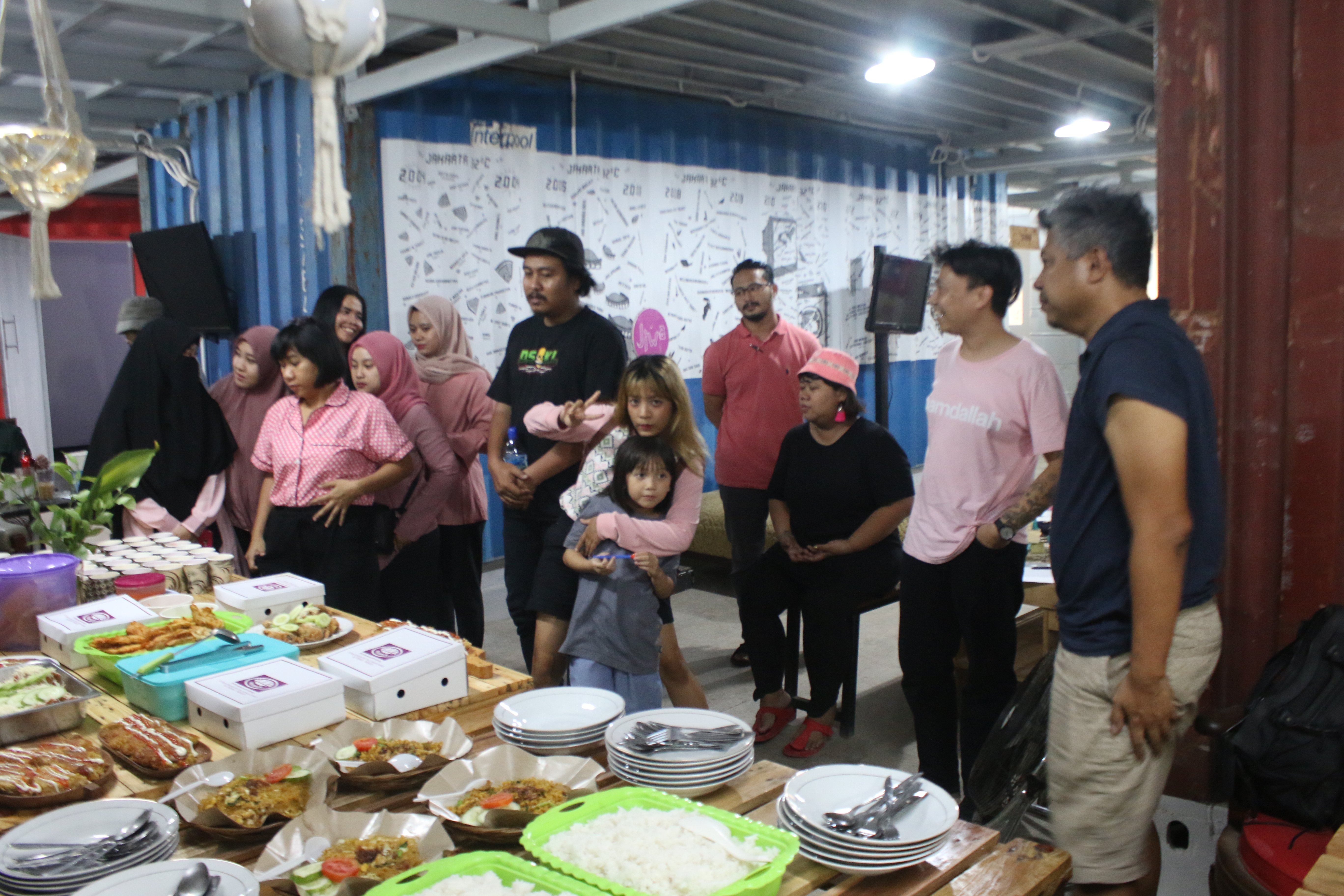
Syukuran Gudskul. Photo by Ignatius Suluh Putra.
At this upcoming 25 year anniversary, we’d like to do something to mark the occasion. We celebrated our ten-year anniversary by sharing more, and making an event out of it called Decompression, which included exhibitions, publications, and more. It provided us with ideas and questions to come back to. But since 2010, we haven’t created opportunities for this kind of feedback. In 2015, we organized something smaller. Turning 17, we just let the moment slide. In 2021, we planned something intimate that never happened because of the pandemic. So in 2025, I think hopefully we still can do something for ourselves again that will enrich our journey further. Not only events and publications, but also realizing our position in the Indonesian context, because much of our work as an artist collective in an exhibition format is never seen by the Indonesian audience. So we are more well known for organizing events for others here in Indonesia. But I think we can share something by acknowledging it and asking ourselves the question, “what can we do about it?” Because restaging past works, like restaging the Sao Paolo Biennial works for example, doesn’t make sense. But if it cannot be reproduced, then what can it be?
SP: It sounds like an important time for ruangrupa and yourself. My next question is around professionalization, which you touched on. I think people expected more professionalization from collectives because collective practices received a big stage within the Western context through documenta fifteen. There was a lot of speculation around what would happen, especially from those unfamiliar with collective ways of working, and whether this way of practice would continue to flourish. Can you share your perspective on the necessity of professionalization to protect folks’ labor, while at the same time understanding that professionalization is embedded in institutionalization and everything that comes with it? I'm sure it’s also unique within the Indonesian context. As you fluctuate in and out of different spaces, how are you navigating thoughts around professionalizing and institutionalizing, while being human, doing your work, and looking back on the work that you've done? It's something that many folks struggle to juggle and I’m curious about how you approach it.
fr: Just a few hours ago, some of us here were talking to a great person who helped me realize how different that term “collective” could be understood, not only in different parts of the world, but also in different parts of Indonesia. It’s different for this person, because she's younger and she's from Palu. Sometimes, as you said, society expects collectives to “grow up”— to become either a foundation or a cooperative or whatever, and take a legal form so it can be labeled and read. Not only the structure, but also how it functions can be read much more easily once you register an entity. And after it’s established and registered, it has to follow certain structures, rules, etc. The younger person from Palu I mentioned earlier is going through that process right now. She’s reaching decisions with her friends to turn from a collective into something else. And to her, there's still the collective.
It's funny to me that ruangrupa didn't call ourselves a “collective” at first. In the early 2000s, it wasn’t the word we used. We used “artists’ initiative” or “alternative space” or “artists-run space.” Slowly, we became more firm in the use of the term collective. And then we asked ourselves, “what has happened?” It was a much lighter term at that time, as you said. Now it's different because of these pressures. Many institutions try to tap into the term “collective” to use it, extract it even. But at that moment we could be many things because collectives can be many things. We’re at a point where collective is used to describe many things that don't have anything to do with the collective type of work that we may be interested in. So from time to time, we have to sharpen and question what type of collectivity we're talking about when we use this word. ruangrupa is becoming sharper, at least in an Indonesian context. For example, lumbung is not supposed to be ours, it's not ours to begin with. It's vernacular that any Indonesian can own. The government, or even vegetable sellers next to my parents’ house, included. Whether we agree with them or not, that's another thing. Because it’s not centralized, as you said. Anyone can keep on going and sustain it the way they see fit. In the Eastern European Biennial Alliance, for example. A few months ago I was listening to a session when they're talking about lumbung and how they can use it. How can they adapt to it? How can they reflect on what they have already? It's energizing to see.
To be honest, our homework is always here. That's why I'm here in rural West Sumatra during this Zoom call. This is the ecosystem that we can enrich and the one within we enrich ourselves. This is our water. It's not perfect in any way, but that's exactly why our main homework is here. How can we keep on practicing lumbung in new and existing contexts? It's funny that lumbung was collaborating with documenta fifteen first, for example, not with artistic institutions in Indonesia. We're creating opportunities to keep on doing lumbung in the way we want, in an Indonesian context. We hope these small but plentiful efforts continue building off of one another. So it's not in vain.
I play a small part in the work here in the development of lumbung Indonesia. There are others who are playing a bigger part in making sure that what we learn, what we talk about, what we campaign for, what we're trying to build is actually being built here and that it’s useful for others whose challenges are closer to our own challenges. Hopefully we can have at least one version of lumbung Indonesia, to see how it is different when it is practiced somewhere else. If we can make a stark comparison between those, we can have a clearer path to sustain lumbung and our collective practice.
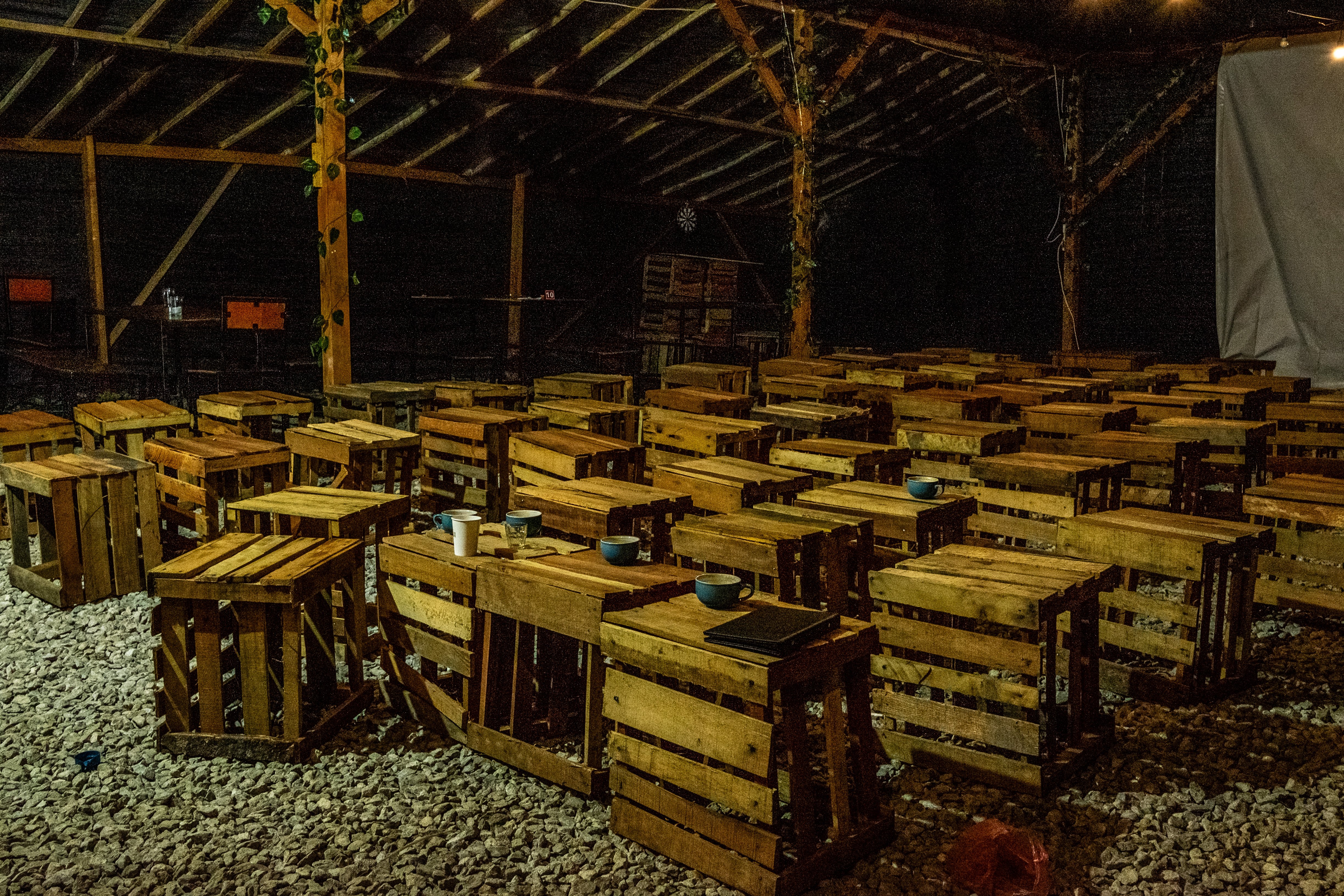
A scene from Lumbung Indonesia's Majelis Akbar 2023, Solok. Photo by farid rakun.
We're lucky that the meaning of collective is a bit different here than in places where art institutions are strong. We're building a collective way of working because it’s a matter of survival. It's not too much of a conceptual thing. It's much more of a practical, everyday way of doing things. Because of that, this way of working keeps going on until today. To work together is a means of survival, because we can access some things because we are more than one. This way of working is not necessarily unique and this mode of working is actually doable here. So then what does it mean? How can we make it more impactful? Answering these questions is so that people don’t have to go through our failures.
Becoming Gudskul was our answer to “institutionalize,” because after a while we could not reject anymore that we had become an institution or can be perceived as one. If we don't take it in our own hands, we are going to become an institution (or perceived as an institution) that we don’t want to become. Becoming an informal educational platform is one answer to it. We can be seen as institutionalizing ourselves, but this is the way we want to do it. This is the way we think that we can survive further because being an artist collective has an age. We’re also not reacting or antagonistic towards other institutions, the government, systems that exist. Yes, we do have problems with them. That's why we're building our own way of working. But we see them as part of the ecosystem as well and the question is how can we co-exist? Because many times, we cannot according to the institution and the state. But maybe now, it can be seen differently. This is a different mode of looking at this. There aren’t many models we can learn from, in fact there may be no models of it that exist now.
SP: How can one create room for experimentation to build new models and modes of being? And as an aside, do folks in Indonesia perceive ruangrupa as a kind of institution?
Relatedly, can you speak to how knowledge sharing works through Gudskul and other projects? This connects to the building blocks of relationship building like reciprocity and generosity, which are evident in your practice. How are you thinking about knowledge sharing with others as you (re)define yourself within Indonesia? How are you thinking through these critical relationship building blocks after almost 25 years of working together?
fr: Around 2017, ruangrupa realized after 17 years that well, we're old, relatively speaking. We can become a tree that keeps growing bigger that could overshadow many other small trees that want to grow. So the question becomes, should we degrow? Should we stop growing or should we be mindful of the way we grow? I think Gudskul is part of that answer. We're trying to see ourselves as a bank of resources. Knowledge is a big part of that. Resources, space, time, history, our experience, all of this. We know many artist collectives have existed before us, but especially after us. This shows that working collectively is one main way of art making in Indonesia. But at least up until 2017-18, it wasn’t seen as such by decision makers or those who have power to build knowledge like universities, schools, government ministries, and others.
So what we think we can do after all these years is that, as we are one of the oldest collectives that’s still around, to recognize that we are sitting on tacit knowledge. What can we do with it? That’s the one big question that Gudskul is trying to answer.
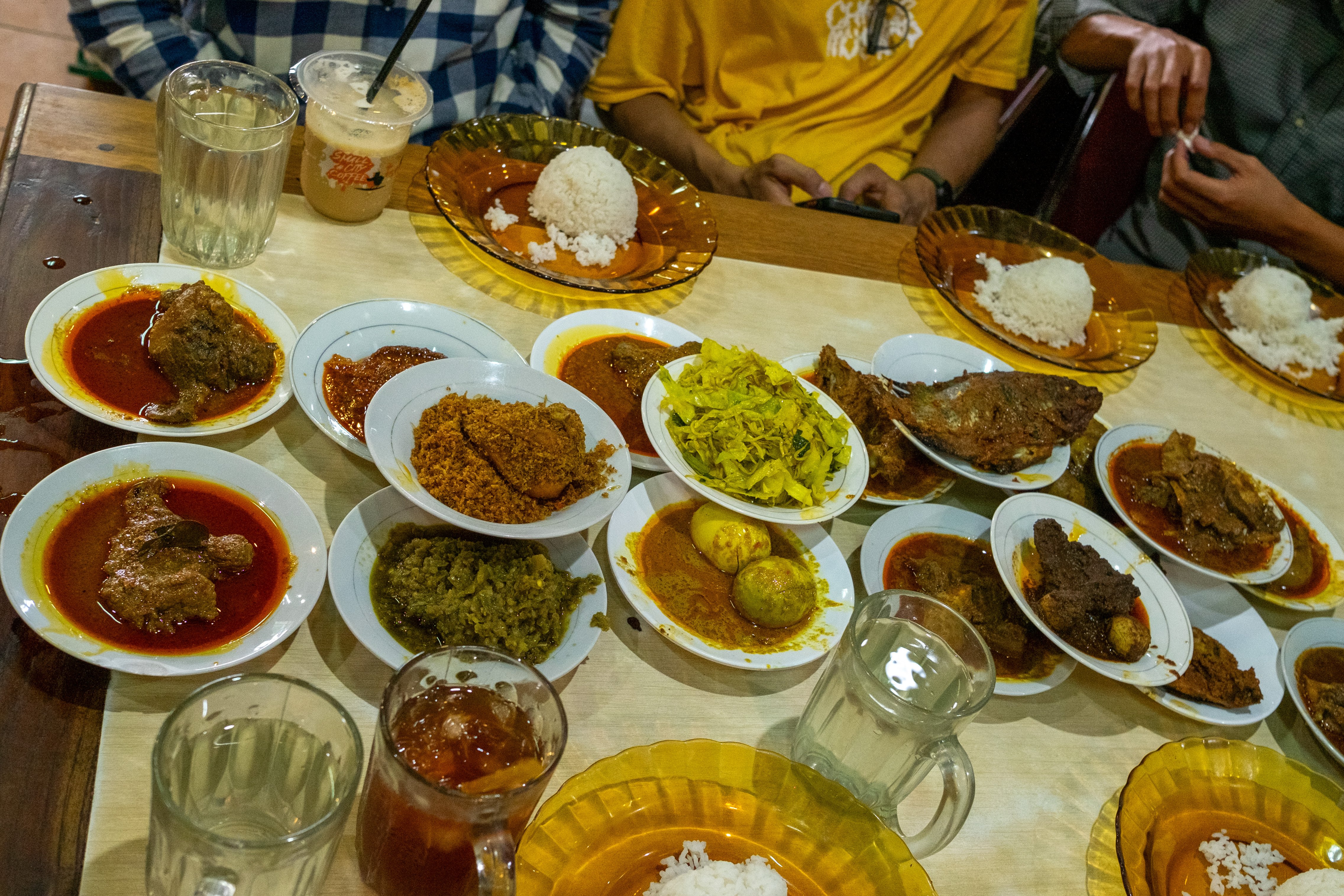
Eating together in a restaurant in Solok, during Lumbung Indonesia's Majelis Akbar 2023. Photo by farid rakun.
If each of us in ruangrupa sees our collective making, collective building, collective experience as a school in itself, then we can explore how we can share it with others, how we can replicate it, how we can help people learn from our experience as well. And together we can argue that a collective way of working is a valid way of making art. In that sense, we have to treat it as such. The model of an individual genius artist has been established now. It's a long-term invention. It's been developed for at least 100 years, if not more (100 or 200 years is not that old, actually, is it?). So can we at least start doing something like that for collective art making? The model that we found would be very different from the Beaux-arts models, which is what the art schools here are still based in. What type of models? We're busy finding that.
We are not antagonistic toward those institutions because we know where they are coming from. It might not work for us, but we cannot say that it doesn't work for everyone. But we can complement that. That's where we're coming from. We can complement them with initiating something to call itself a study in collective and ecosystem system building in contemporary art. So that's been our trajectory.
This work has been seen, yes. Whether it's been seen positively or negatively, this is debatable. Outside of the art scene here, I’d say at least 70-80% of Indonesians have never heard of ruangrupa. The art scene, which is a small world, might know of us and may react positively or not to our influence. I think it can be both. At one point, we realized that the label itself or the name of ruangrupa can be derogatory. To be told, “your work reminds me of ruru’s,” for students in art schools, means that their work was not good. It's good to know, to be aware of.
There are many young people, with the latest development of collectives, because it has become institutionalized in perception at least, who are asking why we should make collectives? It’s a question we asked ourselves when we were young to our elders—why should we become like you? This is valid and healthy.
Coming back to generosity, I think we should not be defensive. It would be great, it would be refreshing if we could joke about it. At least for us, that's our way. We acknowledge it by joking about it. So we take it into our everyday realities. But many people in Gudskul can provide more practical, real answers to knowledge—how we share, how we build, how we disseminate, how we create. This is one of the most valuable resources that we think we have.
SP: I appreciate that. The thing about the joking is funny because one of my initial questions was, well, I just had so much fun at documenta – I wanted to know how you have fun? What's the role of joy in the work that you do together? Because the art scene has a way of saying if it's not serious, then it's not good enough.
fr: It's good to know that you had fun. It is very valuable for me to hear it so thank you for that. Joy is very important. We said to ourselves many, many times that if we're not enjoying it, it's not worth doing. So we should stop doing it. And we stopped doing a lot of things because we just stopped enjoying it. But if at least one of us is really interested in doing something, then it's the fuel of things that we're doing, like our music festival. It's actually not a good business model but we keep on doing it because we're interested in it. We're invested in it and it brings us a lot of joy.
On a related note, it’s important to realize that if we become a host or we play the part of a host, the host should not be stressed out. And we have to strive for it. Because if the host is under distress, the guests can sense it. A lot of times I have difficulties making myself understandable to others in this matter. But I can feel when experiencing works, exhibitions or events, when the people responsible for them actually really enjoy the act of making them. It shows. I don't know how, but I can feel it. As you said, a lot of art events, biennials included, or mainly biennials, are frowning. We experienced a biennial and they made us frown. We try to avoid reproducing this quality as much as possible. But then of course, the backlash does beg the question of whether what we do is art or is artistic enough, which is not only valid as a question, but something we have learnt a lot from dealing with.
Thank you to farid rakun for joining us for this conversation. Seeding Collaborations is a series focused on archiving and highlighting practices across the arts ecosystem that are thinking differently about how we live and work as a cultural sector. This interview has been edited for length and clarity.
About Sophia Park
Sophia Park (she/her) is a writer and curator based in Brooklyn, NY and Gumi, South Korea. She received her B.A. in Neuroscience from Oberlin College and M.A. in Curatorial Practice from the School of Visual Arts. Recently, she worked as a curator for the 15th Gwangju Biennale. Formerly, she worked as the Director of External Relations at Fractured Atlas, a national nonprofit arts service organization and taught entrepreneurship and the arts at New York University. She is part of slow cook, a curatorial collaboration with Caroline Taylor Shehan where they make programs and books, and is a co-founder of Jip Gallery (2018 - 2022). You can probably find her running some silly distance, trying to get back into tennis, or dancing somewhere.
